Function and Application of Fuse
What is a current fuse and its function?
The electric fuse, firstly called the power supply and protection device against electric current overload by melting, It is the oldest protection device against possible faults in electrical circuits. In electronics and electrical engineering, a fuse is an electrical safety device used to provide overcurrent protection for a circuit. Its basic component is a metal wire or alloy strip, which will melt when the current is too large, thereby stopping or interrupting the current. It is a sacrificial device; once the fuse is activated, it is an open circuit and must be replaced or rewired, depending on its type.
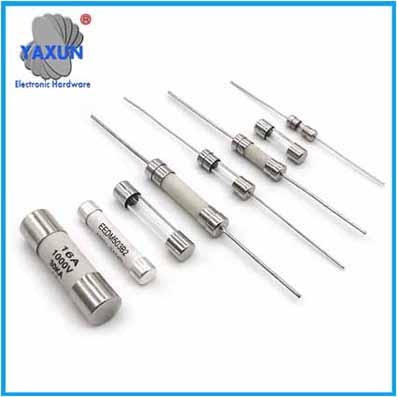 |
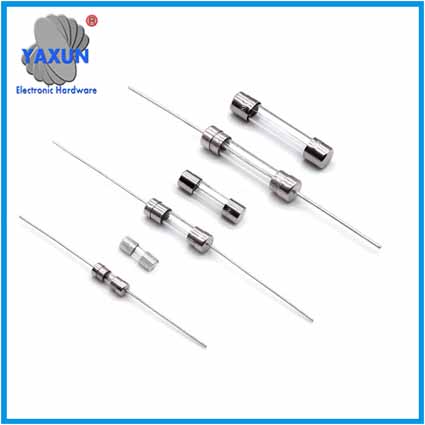 |
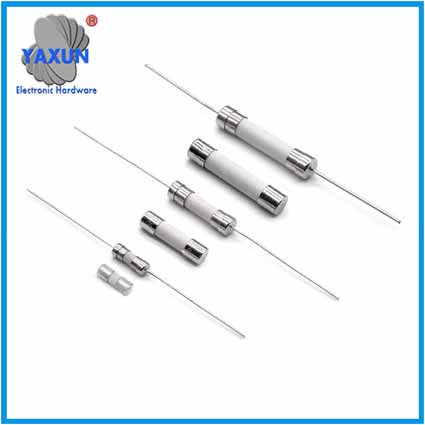 |
| electrical fuse | Glass fuse | Ceramic fuse |
Fuse General data
The electrical fuse, first called the power supply and protection device against electric current overload by fusion, is the oldest device for protection against possible faults in electrical circuits, appearing in the first bibliographic citations in 1774, at which time and used to protect capacitors from damage against discharge currents of excessive value. During the 1880s and when its potential as a protective device of the llometric systems was recognized, which were only just beginning to spread. From that moment, up to the present time, the numerous developments and the appearance of new fuse designs advanced at the pace of technology, and since, despite its apparent simplicity, This device is currently at a high level of technology, both as regards the materials used and the manufacturing methodologies. The fuse coexists with other protective devices, within a framework of changes in the toxicity that make it appear old-fashioned or obsolete, which is never the case.It is easier to understand when describing the current field of application that the nominal parameters have very wide ranges. The working voltages range from a few volts to 132 kV; The nominal currents, from a few mA up to 6 ka and the breaking capacities algamen in these cases 200 ka.
The annual production of fuses exceeds 300 million units. A medium-sized industry may have hundreds of fuses installed and a modern automobile may jam between 40 and 60 fuses. Most electronic equipment even has a fuse. Their sizes can be as small as the head of a wooden match, and in the other case, this is for applications of high voltage and with high power curtiu circuit, pack fuses that are around 20 kilograms. .
Production statistics worldwide indicate the constant growth of the market. For the types of fuses, the growth will be very high, such as the case of devices for low-power electronic circuits and elements for use in automobiles. If yes, for the traditional fuses (low and medium voltage, and high breaking capacity), a grower with a slower speed is packaged, around 3% a year.
The principle of fuse operation is very simple: base a weaker element in the circuit, so that when the current reaches levels that could damage the components, the fuse melts and cuts off the current flow. That the fuse element or weak link in the circuit when fusion does not necessarily imply that there is current, this difference being the key to understanding the theory behind the apparently simple fuse.
Over the years, fuses appeared for specific applications, such as protexer lines, motors, power transformers, voltage transformers, capacitors, power semiconductors, insulated conductors (cables), electronic components, printed circuits, integrated circuits, etc. These very diverse types of fuses have very different selection characteristics, which makes the correct selection complex.
It is so rich that the fuse user has an important level of knowledge, that it is not a bonus to acquire due to the lack of informative material from good access.
It is necessary to consider another important factor, which is the existence of fuses responding to the standardization of various countries. When using electrical power distribution systems, use high power fuses in our medium, responding mainly to European standards, but for medium voltage and low power distribution, use elements close to North American standardization.
European standardization, currently practically unified the IEC (International Electrotechnical Commission) standards, but in our midst there are infinite installed devices that originate from times prior to unification. The situation begins as when reference is made to the fuses installed in the equipment, whether industrial, electrical or electronic, because the devices respond to the standards of the country of origin of the equipment.
The wide range of fuses for low voltage equipment is practically unlimited, and it can be stated that each country in the world represents a specific fuse. Faced with this situation, the replacement of the fuse is very bad to cry, pole that has to resort to the replacement of the device of carauteristics as small as possible, which again adds a good level of knowledge on the part of the user.
In the 1990s, the seventh stage of fuse development began, which can be considered as generated by the name Fuse . One of the most difficult fields of application of the fuse and for low nominal currents, in the order of fractions of amperes up to no more than 10 A. To operate effectively with these nominal currents, the fuse element must have such small dimensions, that make it unmanageable in the arm, from the mechanical point of view. It also appears to be called Substrate Fuse, which consists of conductive material deposited on an insulating plate, similar to long-unwrapped printed circuits on the arm of electronic devices. Use of the techniques for deposition of the conductive material, such as the photographic and acid attack used on printed circuits, vacuum deposition used on silver plates of non-conductive materials, permeable mastic applied on the label, etc. As a substrate, use alumina, ailicon, mica, etc. Nowadays, we get stuck in developing fuses of smaller dimensions, called lithographic fuses, since they are achieved with the known offset method, using a very thin and flexible substrate. The need for fuses of a low size is increasing, due to the miniaturization of electronics, being able to affirm that each modern electronic equipment has one or more fuses up-to-date, such as mobile phones, digital cameras, video cameras, etc. Another well-developed field of current automotive fuse, due to the ever-increasing addition of electronics and car tricide. It is fully electrically powered by hybrid units, contains well electrical circuits and has a large number of fuses. The next expected development of fuses, which would lead to the next stage, is the addition of capacity or ability for decision-making or adaptation, which would allow the operation to be modified by working conditions regardless of the situation. magnitude of the current. Thus giving rise to the so-called intelligent fuse, from which the best incipient and well-protected inda are already being produced, with the possibility of being patented.
 |
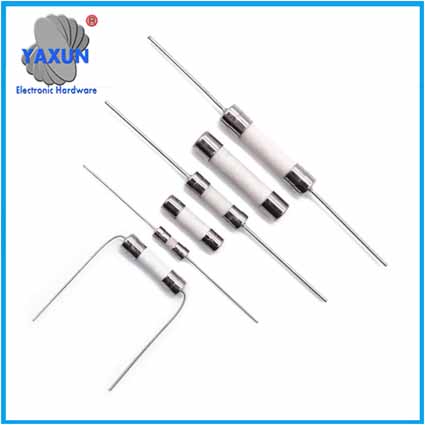 |
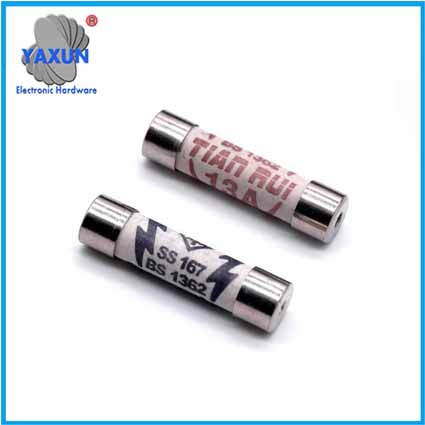 |
| High voltage fuse | Lead fuse | Bussmann fuse |
Fuse Definitions
Nominal characteristics: General terms to designate a number of characteristics that define the operating conditions for which the device was designed and from which to determine the test conditions.Presumed current of a circuit: Current that would flow in a circuit if the circuit breaker were replaced by a sheet of negligible impedance, in no other way or in the circuit at any source.
Presumed breaking current: The presumed current corresponding to the arc initiation between the breaking operation.
Breaking capacity: Presumed breaking current that a fuse is capable of overcoming the prescribed conditions.
Breaking current reaches The maximum instantaneous value reached by the current during the operation of the fuse breaking, when it operates in such a way as to prevent the current from reaching the maximum value that would reach in the absence of the circuit breaker.
Pre-arc time: The beginning of the circulation of an abundant current as to melt the fusible elements and the between in which the arcu begins.
Operation time: Sum of the pre-arcu time and the arcu time.
Joule integral (I² t): The square integral of the presumed breaking current.
Virtual time: I² t will start with the square of the presumed breaking current.
Restoration voltage: Voltage that appears between the terminals of a circuit breaker after the break of the current.
Breaking voltage: Maximum value of the voltage, expressed in peak value, which appears between the terminals of the circuit breaker while the fuse is operating.
Service classes
Concerning the class of service, the fuses are designated by aciu two letters; the first indicates the function it will play:
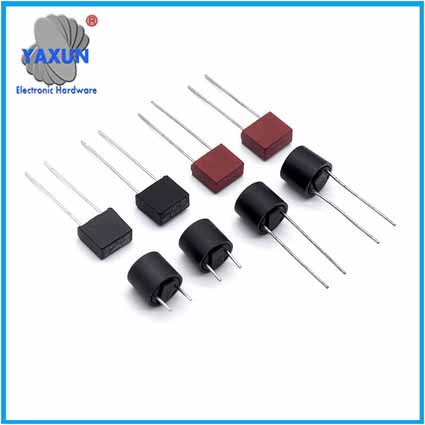 |
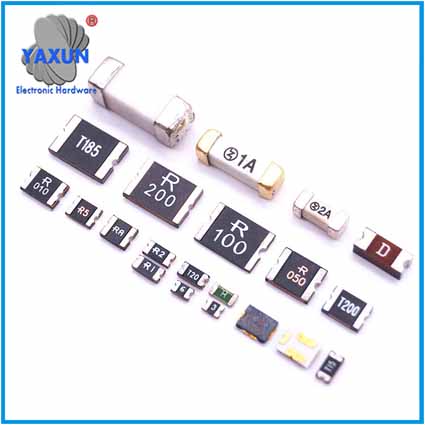 |
 |
| Round Fuse Board Mount | SMD fuse | fast-acting Resistance fuse |
First letter. Function.
Category “g” (general purpose fuses) general purpose fuses.Category “a” (accompanied fuses) accompaniment fuses.
"I": Cables and conductors.
"M": Connection devices.
"R": Semiconductors.
“B”: Mining facilities.
“Tr”: Tresformadores.
The combination of the two letters gives you multiple types of fuses, but I will only put the most common ones or use them:
F: Fast blowing fuse. Protects against overloads and short circuits.
T: Slow blowing fuse. Protects against sustained overloads and short circuits.
B: Fuses for the protection of very long lines.
D: Circuit breaker fuses.
gG / gL: Norma CEI 269-1, 2, 2-1. Ye a current legend cartridge was used primarily in the protection of circuits with important current points, such as circuits of lighting, heating, etc.
Type gI: General purpose fuse. Protects against overloads and short circuits, usually used for line protection although it could be used for motor protection.
gR: Semiconductors.
gII: General purpose fuse with late melting time.
aM: Motor accompaniment fuses, that is, to protect motors against short circuits and therefore must be protected from overloading the motor with a device such as a thermal relay.
There are many types of fuses, we are going to review the most important ones:
Cylindrical glass fuses that are often used as protectors in receivers such as electrical appliances, radios, power supplies, burn detectors, etc.Glass fuses. When these fuses are camouflaged, they must be replaced by another of the same characteristics, not only should you look at the voltage and amperage that it supports, but you must take into account the reading that it carries before the amperage because depending on which the current is (F, FF, T , etc.) the fuse is more or less fast in its melting. Glass fuse table. Lletres indicators of the behavior of the fuse blown.
Vehicle fuses: Normal vehicle fuses indicate in the car's entertainment manual what are the amperages that they have to say in each specific circuit, if the amperage is indicated by a color code:





